Pet Sitter’s World

What Is Your Superpower?
Members share what makes them stand out
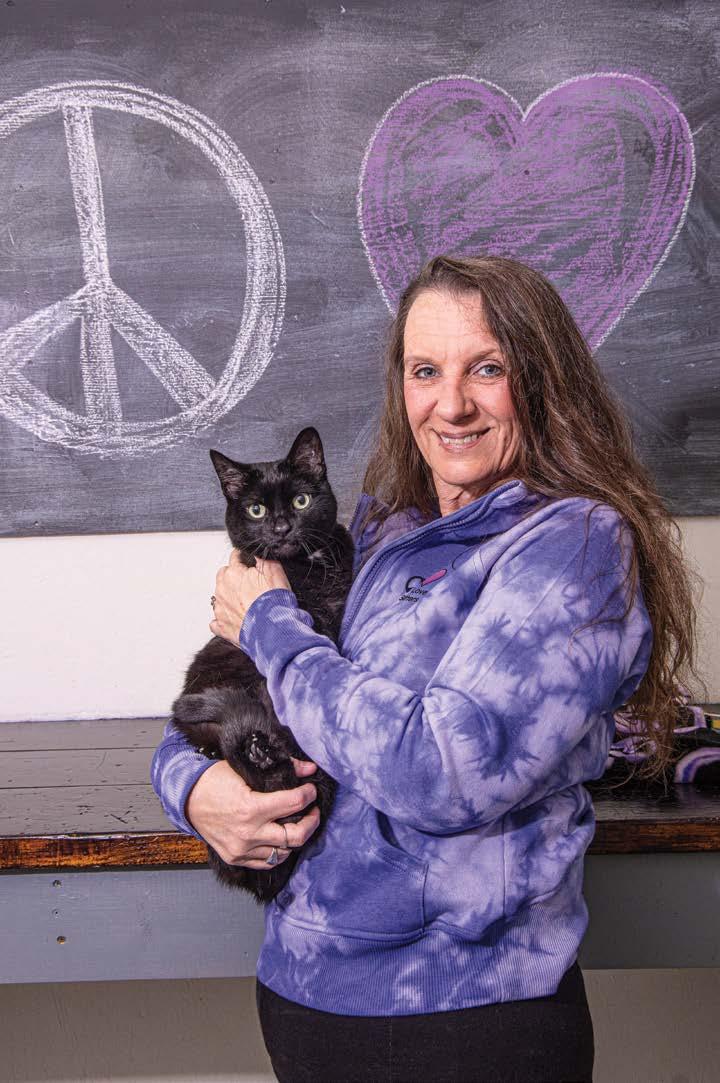
Prioritizing Your Mental Health and Wellness
Did you miss it?
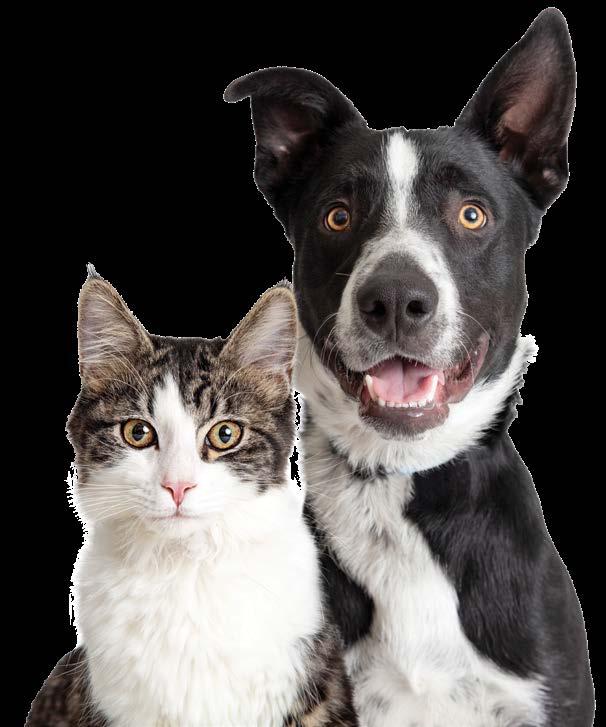




Members share what makes them stand out

Prioritizing Your Mental Health and Wellness



34 Insurance Issues
4 From the PSI President
6 PSI congratulates 2024 Pet Sitter of the Year
8 Giving back to the community
11 Celebrating PSI history
14 Promoting PSI to current and potential clients
16 Using Mother’s Day and Father’s Day to boost business
16 CPPS Quiz
17 U.S. pet sitters, have you heard of the BOI report?
18 Pet sitter mental health and wellness
22 Before you draft your job ad
26 What is your superpower?
31 Who cares for the pets if you get sick?
32 Going green is for the birds
38 Cardio-pulmonary cerebral resuscitation
41 PSI’s 2024 free member webinar series
42 Using local optimization to increase your business’s visibility
45 Things to post on social media (Apr-Jun)
46 Important safety reminders for pet sitters and dog walkers
48 What sets your dog walking company apart?
51 Recognizing diabetes in pets
51 Diversity and inclusion resources
52 What should you do if you see an unattended pet in a vehicle?
54 CPPS Announcements





If you’ve been a PSI member for a while, you likely already know that I’m passionate about discussing how burnout and compassion fatigue impact professional pet sitters and dog walkers. My interest in these topics was sparked by situations I encountered early in my career at PSI—witnessing multiple amazing pet-care professionals struggle in their businesses or decide to "hang up the leash" and leave the industry due to what they described as burnout. In most situations, it was a combination of stressors from both their career and their personal lives that negatively impacted their mental— and physical—health.
Since those early years at PSI, I’ve become a Certified Compassion Fatigue Educator to better understand and educate others—and the entire PSI team has committed to making sure our association focuses on you, the professional pet sitter, but also you, the person. This means making sure members have easy-to-access business tools and pet-care resources, but also advice on juggling personal obligations, finding work-life balance, combatting compassion fatigue and more—all while owning and operating a professional pet-sitting or dog-walking service.
We feel more than ever that it’s vital for professional pet-care business owners to understand burnout and compassion fatigue—and to realize that self-care is an important component of professionalism. There are not enough massage appointments or bubble baths in the world to overcome not having boundaries and a clear self-care plan, so it’s time for us—as an industry—to go beyond surface level self-care tips.
Challenge 2: Participate in PSI’s Pet Sitter Mental Health and Wellness Summit on May 21.
If you read the Jan-Mar ’24 issue of Pet Sitter’s World magazine, you know I decided to issue a small challenge for you in each issue (thanks to those who shared they had new headshots/company photos made based on the first challenge!). But for this issue, I’m asking for you to commit to participating in a FREE event PSI will be hosting on May 21.
The idea to host an online mental health and wellness summit was sparked by a conversation with two other pet-care professionals in Texas last year where they shared their search to find these types of resource specifically for pet sitters and dog walkers had yielded little to no results. While we are thankfully seeing more focus on mental health in the pet industry at large with initiatives like Not One More Vet (NOMV) in the veterinary industry, it’s a conversation we want to see continue (and increase) in the professional pet-sitting industry as well.
We knew then that we wanted to offer more resources in an easy-to-access and free format so it could reach as many pet sitters as possible. We’re working to finalize the sessions and speakers now, but information and sign-up details will be available soon. I encourage you to accept this challenge and make plans to participate— and spread the word! If you have any questions, you can always email me at beth@petsit.com
Patti Moran, Publisher
Beth Stultz-Hairston, Editor
Michelle Boles, Layout and Design
ADVERTISING
PSI Advertising
P.O. Box 457, Pfafftown, NC 27040 advertising@petsit.com
HOW TO REACH US
P.O. Box 457
Pfafftown, NC 27040
Phone: (336) 983-9222, Press 1 for Member Services
Email: info@petsit.com
Website: www.petsit.com
OFFICE HOURS
Monday—Thursday, 9:30 a.m.—5:00 p.m., Eastern Time
STAFF
Patti Moran, Founder & CEO
Beth Stultz-Hairston, President
Debbie Leonard, Systems Operations Manager
Michelle Boles, Graphic Design Manager
Meghann Evans, Education & Outreach Manager
Heather Smith, Membership Programs Coordinator
©Copyright 2024 by Pet Sitters International Inc. All rights reserved. Pet Sitter’s World is the official publication of Pet Sitters International, Inc. (PSI). Printed in the USA.
Pet Sitter’s World is published by PSI and is available exclusively through PSI membership. No portion of this publication may be reprinted or reproduced without the written consent of PSI and all authorized reproductions must cite Pet Sitter’s World, published by Pet Sitters International, as the source. Requests for reprint permission should be addressed to Editor, Pet Sitter’s World, P.O. Box 457 Pfafftown, NC 27040.
Publication
Beth Stultz-Hairston, PSI PresidentWhether you’ve just joined PSI or are a long-time member, these resources will help you take full advantage of your PSI membership.
Information is right at your fingertips 24/7, 365 days a year in the Members Area of petsit.com. Log in to access:
• Free Monthly Member Toolkit
• Free custom business profile on PSI’s Pet Sitter Locator
• PSI member logos
• Customizable, downloadable pet-sitter forms
• Customizable, downloadable promotional materials
• Ready-to-use social-media images
Access the business tools you need—at special discounts—through PSI’s Preferred Providers:
• Pet-sitter liability insurance and bonding at a group rate
• Discounted background checks for you and staff
• Assistance with health and supplemental insurance
As a member you can increase and demonstrate your knowledge as a pet-care business owner. Resources and opportunities include:
• Pet Sitter’s World magazine
• Free live and on-demand webinars
• The PSI Blog
• Discounted rates on PSI’s online courses
• Discounted rate on PETSIT PRO
• Opportunity to earn the CPPS-Certified Professional Pet Sitter® designation
PSI membership also offers strength in numbers. You can take advantage of a variety of opportunities to share your lessons learned and learn from fellow PSI members. Opportunities include:
• Professional Pet Sitters Chat, PSI’s private, members-only Facebook group
• Pet Sitter World, PSI’s annual in-person conference
• FOCUS, PSI’s one-day online summit for pet sitters and dog walkers
• PSI-Registered Networks
• PSI’s Facebook, Instagram and YouTube


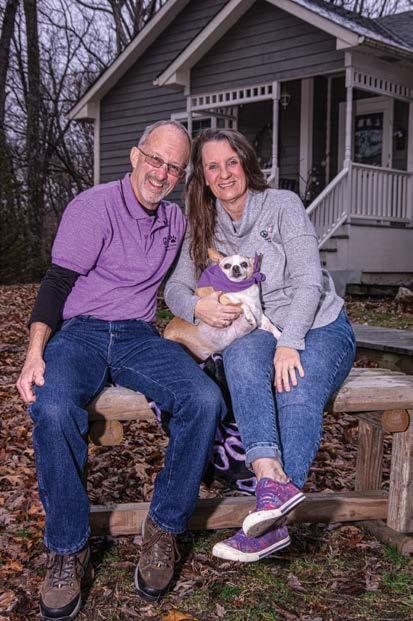
Bobbi Wilson, owner of Peace Love Paws Pet Sitters, LLC, in Columbia, Missouri, has been named PSI’s 2024 Pet Sitter of
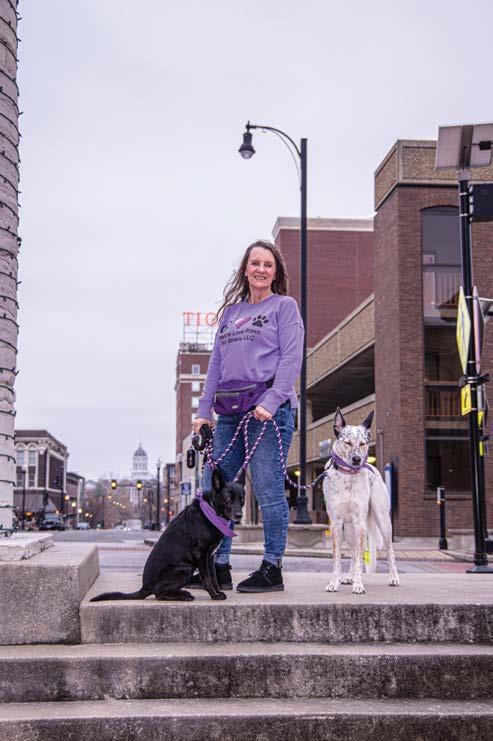

Bobbi, who operates her professional pet-care business with her husband, Scott, joined PSI in 2018 and earned the CPPS-Certified Professional designation that same year. She was also a top-five finalist for the 2023 Pet Sitter of the Year award.
Prior to operating her pet-sitting business, she was a home inspector for a decade and was the only female ASHI/ AHIT certified home inspector in Mid-Missouri. In addition to providing pet-care services to approximately 150 clients, she also owns a nonprofit organization focused on pet rescue.
Bobbi is also actively involved with various pet-related nonprofit organizations in her community and has hosted training and classes for both pet parents and other pet
In the references submitted, clients and colleagues touted Bobbi’s stellar reputation in their local area, sharing that she is well known as a pet-care provider in their community— both for the services she provides as a pet sitter and for the care she provides to
Pet parents also praised her willingness to go above and beyond the call of duty. One client described how, on a previous trip, an airline glitch resulted in her being delayed two days returning home. She explained that Bobbi was not only able to accommodate her delay, but also made additional visits to
her pets because there was inclement weather in the area.
“PSI’s members are the most professional, educated and passionate pet-care business owners around the globe, so selecting one winner for this special award is an extremely difficult task for the judging panel,” said PSI President Beth Stultz-Hairston. “However, Bobbi’s focus on education and best practices for providing exceptional pet care, along with her commitment to helping her clients, community, and fellow pet-care professionals, makes her an ideal recipient for this title.”
As PSI’s 2024 Pet Sitter of the Year, Bobbi will serve as the “face of the professional pet-sitting industry” throughout 2024 and be officially recognized at PSI’s 2024 Pet Sitter World Educational Conference in Niagara Falls, New York, this fall.
“I believe businesses flourish if they are part of a network and also by taking advantage of top-notch education, partnering with their community, and inserting their personal creativity,” said Bobbi. “As Pet Sitter of the Year, I want to encourage those in our industry to nurture their businesses into a pet-centric network.”
To learn more about Bobbi and Peace Love Paws Pet Sitters, LLC, visit peacelovepawspetsitters.com
Congratulations, Bobbi! We look forward to all you will accomplish as PSI’s 2024 Pet Sitter of the Year and look forward to working with you in the coming year! —PSI Staff

PSI members are a generous bunch. From volunteering time to meet the needs of shelter pets to sponsoring local youth sports teams, you find ways to meet the needs of your community and to raise awareness of important causes. And not only do these efforts make a difference in the lives of people and pets across the globe— they also foster goodwill for your business.
We asked five PSI members to share their experiences giving back.



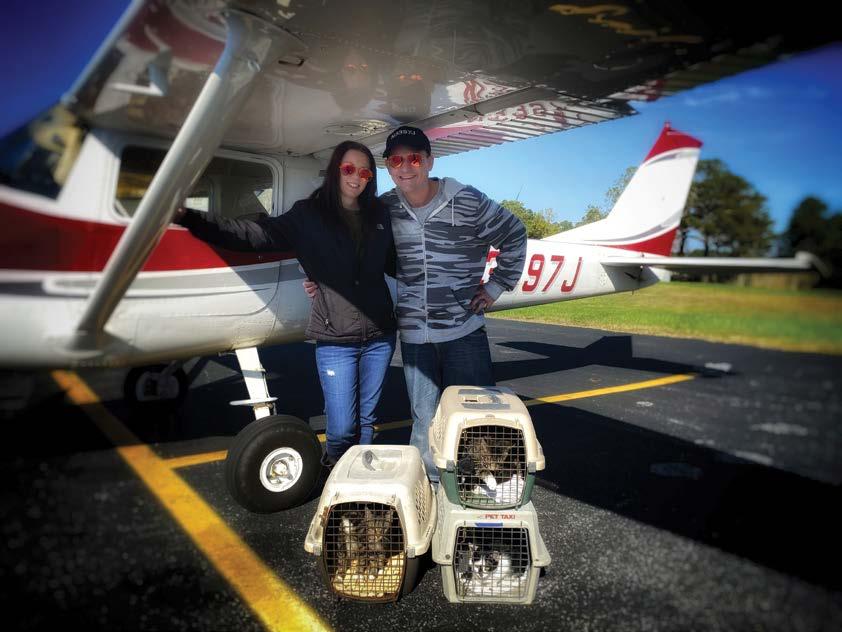
As a pet sitter, in what ways do you give back to your community or align your business with charitable causes?
Stacy: We sell swag to raise money for area animal shelters. My teen daughter designs hoodies, coffee tumblers, and recycled grocery bags. We just launched a partnership with our government owned animal shelter to provide all adoption families with $50 worth of free dog walks. Supporting owners like this reduces the amount of returned pooches to the shelter for behavior problems.
Shannon: One of our core values is “Service to our Community.” We look for ways to do this, from sharing posts on our community’s Facebook forum about important pet-related information we have acquired, to doing supply drives for our local dog rescue group. As the business owner, my family and I foster for a local shelter near us, and our company shares fostering and adoption opportunities with our social media followers. We are currently sponsoring a youth basketball team, have donated money to the youth program of our local library, and were sponsors at our Pride March the last two years. This year, we spoke to two third grade classes at our local elementary school about successful goal setting techniques.
Sherri: I’m a pilot and own two planes to fly Pilots N Paws missions as often as possible. Pilots N Paws is a 501(c)(3) nonprofit organization that brings pilots and rescue organizations together to transport animals in need. As a volunteer pilot I donate my time and planes to this worthy cause. It can be costly and time consuming for a shelter or rescue group to transport animals across state lines. It can also be very stressful for the animals to be cramped in cars or vans for long hours or days at a time. So, we step in and eliminate that problem. A typical PNP mission consists of anywhere from 1 to 4 pilots and takes approximately 2 to 8 hours. The longest mission I was a part of was for a Chow that was being transported from FL to NJ where she was being
By Meghann Evans, PSI Education & Outreach Manageradopted. I casually mentioned I was a pet sitter and would love to see Biscuit again. I never dreamed one of my flights would lead to a new client but that’s exactly what happened! What’s more, the picture I posted of Biscuit and her new mom in front of my plane wound up being featured in Flying Magazine, the most prestigious aviation magazine in the world, when they did a feature on PNP. I’ve also made some great friends in the process. Becoming a volunteer pilot for PNP has been one of the best decisions and one of the most rewarding things I’ve ever done.
MiKayla: We donate every year to Friends of the Animal Shelter who help new pet parents with starter items when they adopt from the shelter. We also donate in honor of a pet’s life to the same organization that will send out a certificate thanking the pet owner. Adventures In Pet Sitting has started to go to schools to teach the younger generation how to approach dogs.
Derrick: At Beach Dawg Care®, I am not only a pet sitter, dog walker, dog trainer, I am an animal rescuer and animal rights activist. I founded Beach Dawg Care® with a mission to also rescue animals and promote dog adoption. I have dedicated my life to fighting for animal rights and advocating
for their well-being. I have actively protested against the inhumane treatment of animals, including Lolita, the orca who had been confined to the smallest tank in the world at the Miami Seaquarium for over five decades. I work closely with respected animal charities, shelters, and rescues to help animals find loving homes such as Abandoned Pet Rescue and The Humane Society of Broward County both in Fort Lauderdale, FL, near my service area. I also collaborate with organizations like the nearby Florida Keys SPCA. And in my home state of North Carolina, I help the Avery Humane Society in Newland and The Humane Society of Wilkes in Wilkesboro. And I have donated my time to Fundacion Perros Sin Nombre in Tela, Honduras, to support their mission of rescue and adoption. Tela is where my husband’s family is originally from.
Why is it important to you to give back, and how do you decide what efforts to get involved in?
Stacy: Giving back to your community is just good business. And if done correctly, it accomplishes several goals. We choose to work with area animal shelters because they are most in need of help. They are overwhelmed and under resourced. It’s important to us because it gives resources to a vulnerable pet population; it fosters goodwill, provides positive exposure for our company, and opens a valuable pipeline of new potential clients.
Shannon: It’s important to us to look for places where there is a need and try to do our part to help or share information so others know how they can help. As a small business, we want to support our community just as they have supported us.
Sherri: People often ask me, “Why did you become a pilot?” Well one of the reasons was to be a volunteer
pilot for Pilots N Paws. I loved their mission and wanted to be a part of it. There is no better feeling than completing a rescue flight and seeing how happy the pets and their new owners are, or knowing I played a small part in getting a dog or group of cats out of a shelter and into a rescue where they will have a better chance of getting adopted.
MiKayla: It has always been important for me to give back to my community. I enjoy putting smiles on people’s faces especially when times are tough. Those who have pets do well emotionally and physically but at times they might have to give up their pet due to financial reasons which is heartbreaking. This allows them to keep their pet and their health to good standards. It is also important to teach the younger generation how to approach and care for a pet properly. You teach them at a young age, that they will take care of creatures and pets in a more respectable manner.
Derrick: After my loyal, beloved American Bulldog, Tankie, passed away, my determination to make a difference grew stronger and passion for animal rescue was ignited. Determined to make a difference, I now dedicate any time not working directly with pet parents and my expertise to saving innocent lives and promoting positive pet ownership.
Pet-sitting business owners have busy schedules. How do you make time for these charitable efforts?
Stacy: I’ve done these activities without staff and with staff. Admittedly it is easier to find time when you have staff. However, I create time because it’s part of our business model to create exposure for our business, open pipelines to meeting new clients. It’s how we grow and feed our employees.
Shannon: Service to our community is built into the foundation of my business. We prioritize this as one
of our core values. We find ways to serve that are within the time and resources that we are able to dedicate. We got into this business because of our love of animals. We don’t want to lose sight of that in the busy-ness that comes with running a small business. We want to ensure that we can holistically serve both our clients’ pets and support the organizations in our community who are out there on the ground doing the work to make things better for both people and animals.
Sherri: Finding the time is the hardest part. When coordinating with the rescue team I usually try to take early morning flights so I can get back for pet stops in the afternoon. Otherwise, I get coverage from the people that work for me. Me and my husband bought a bigger, faster plane in 2022 specifically for Pilots N Paws flights. I wanted the ability to go farther, faster and to fit more pets into the plane. A lot of the rescue flights have multiple dogs or cats going from point A to B and I could never help with those flights with my smaller Cessna. Now we have a lot more options with the Mooney.
MiKayla: We attend multiple events throughout the year, mainly in November. We also schedule times to be able to do these events. Making it a priority in the business has helped.
Derrick: My passion for animals drives everything I do. Supporting animal rescues is an integral part of my mission. I believe in giving back to my community and supporting causes close to my heart. I am committed to supporting animal rescue organizations and making a positive impact on the lives of animals in need. That’s why any spare time I have is dedicated to helping animal rescue organizations.
What methods and/or platforms do you use to inform clients about these efforts and how they can get involved?
Stacy: This was actually much easier than I anticipated. When we designed swag items to sell to raise money, the beneficiary animal shelter would post the product on their social media which had over 100K followers. We sold 100 ($50) hoodies in an hour between our clients and strangers who were on their social media.
Shannon: Facebook is our number one resource for connecting with both clients and our community. We post on our business page and share those posts to community pages.
Sherri: I usually post my flights on Instagram and Facebook as well as attach pictures to mass emails I send to my clients a few times a year. I have had clients ask how they can donate for flights, but as a private pilot I’m not allowed to accept money for flying even if it’s for charity, so I just direct them to the PnP’s website to make a donation.
MiKayla: We send out emails and post on social media platforms about what we are doing or what is coming up plus how they can help.
Derrick: Subscribers to my newsletter receive regular updates about the dogs I help rescue, their heartwarming adoption stories, and the initiatives I am taking to make a difference in animal lives. Through these updates, my followers get a chance to witness the impact of their support firsthand. They also stay connected with me through my adoption page on my website, BeachDawgCare. com, where I post the dogs
that have been at the shelters the longest and are available for adoption, upcoming events, and success stories of the rescued dogs finding their forever homes. By doing this I hope to encourage others to help make a difference.
What kind of feedback have you received from clients when they learn about your efforts to give back?
Stacy: We always announce our activities and give them an opportunity to participate. They love it!
Shannon: They have been supportive and thankful. They express their desire to help and ask about ways we would suggest. We are all animal lovers and appreciate any and all efforts we can do together to make their lives better.
Sherri: They think it’s pretty incredible, get very excited about it and tend to ask a lot of questions that I’m more than happy to answer. I’m very passionate about it and love telling people about this amazing organization. Pilots are always looking for an excuse to go flying. What better way to spend a day than saving lives.
MiKayla: Many of our clients love the idea and want to assist in any being able to donate or just help get the word out. It has been a huge blessing.
Derrick: My clients say that nothing warms their hearts more than seeing rescued animals finding their forever homes and receiving the heartwarming success stories.
As PSI continues to celebrate our 30th anniversary (March 17 marked our 30 years!), we are taking a look back to celebrate important moments in the history of PSI—and the pet-sitting industry at large.
Did you know PSI Founder and CEO Patti J. Moran wrote the first book on the topic of professional pet sitting?
Disillusioned by the corporate world and inspired by a good friend who was a huge animal

She found several resources about starting a small business, but there were no resources on pet sitting or in-home pet care. She seriously contemplated the risks of launching an "unheard of" business. The uncertainty of venturing into an unestablished industry was frightening. And, as she searched for business insurance coverage, many doors were shut in her face. No one had heard of—or understood—professional pet sitting.
After word of her business spread to other parts of the United States, Patti was prompted to put her how-to advice on paper. In 1987 she wrote the first book and premier reference on the topic—Pet Sitting for Profit
Through the years, it has been considered by many to be the “bible” of professional pet sitting.

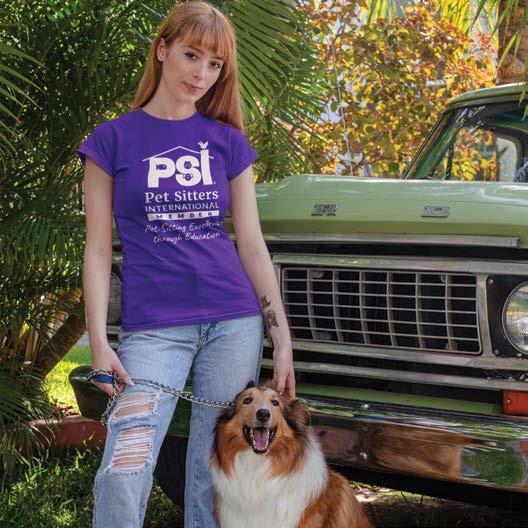



There are many reasons why pet sitters choose a membership with Pet Sitters International. PSI has excellent education, provides the opportunity to earn the CPPS-Certified Professional Pet Sitter® designation, provides resources for pet pros, and has the friendliest staff!
But one thing most pet sitters fail to do is spread the word about their PSI affiliation! Sharing your membership with your current and potential clients sets you apart from other pet sitters in your community. Educating pet parents regarding your PSI membership lifts up the pet industry standard as a whole.
Once you have become a member of Pet Sitters International, how do you use it to promote yourself, your business, and your staff?
By definition, "membership" is a noun meaning “the fact of being a member of a group.” The word “fact” gives you permission to spotlight how you use your membership with those in your pet-centric network.
Believe it or not, it is easier to promote yourself as a group than it is to promote yourself as an individual. The most comfortable way to share your membership is to start with those who you know and who know you—your clients. Naturally, everyone wants to feel like they are a part of a group, but realistically, your being a part of PSI gives your clients the feeling of comfort and ease. They see you as a business professional, who is dedicated to their business and one who places value on exceptional business practices. In your clients’ eyes, you become the pet-sitting company that is serious about taking care of their pets. They recognize your commitment to education to handle any situation. They also understand that being a part

of PSI means you have gained resources that you will share with them for continued heath and safety for their pets. PSI provides your clients with relief in knowing they are working with a recognized professional and not the “friend of a friend who likes animals.” Your commitment to top-notch education and involvement with a pet-centric network of professionals is something you need to be sharing.
How to get started promoting your membership
The best way to start is to invite your pet parents to see what PSI has offered you by sharing your experiences with them. You can’t deny the old fashioned “visual concept” when it comes to grabbing an audience. Statistics show an average 90 percent processed by the brain is visual content. The human brain can process an image in milliseconds and allows us to remember 80 percent of what we see. The easiest way to start is with your social posts, your blog posts, and your newsletters. Share a special story regarding a PSI class you have taken and how it applied to their pet. Share how another PSI member gave you guidance in a situation that you applied to a recent drop-in or how a PSI staff member assisted you recently. Your pet parents really are paying more attention than you might think!
Make it a practice of sharing your PSI membership with your potential clients. Diligently include your logo and PSI’s logo together on your shirts, car wraps, business cards, social media posts, website and your meet & greet information, etc. Be sure to add to your verbal script to reiterate your PSI membership on the first phone call or at your meet and greet. Lastly, make it a point to mention your credentials with PSI and how PSI has benefited your current pet parents by your being a member.

Year. Learn more at peacelovepawspetsitters.com

I welcome you to continue to join me in the next two issues Pet Sitter’s World magazine to learn how to share your PSI membership with your petcentric network and why you should take advantage of all things PSI. Remember, if your clients do not recognize you as a PSI member, you have not promoted yourself to the fullest! Peace Love Paws.
Take the Pet Sitter’s World Quiz to earn renewal CEUs.
You can get a maximum of 10 CEUs per three-year renewal cycle with these quizzes. Look for a new one in each issue of Pet Sitter’s World!
If you are a CPPS, you can now earn one (1) CEU for answering all five of these questions correctly. The answers can all be found in the pages of this issue of Pet Sitter’s World.
Important: To submit your quiz answers, please visit petsit.com/ceu-request to fill out and submit PSI’s CEU Request Form. Quiz answers should be submitted through this form and not emailed directly to PSI.
1. True or False: Adding location modifiers to your website to gain visibility is known as “visibility optimization.”
2. List three of the early signs of diabetes that are shared in this issue.
3. Fill in the blank: Job descriptions should define _____________ vs. _____________ in compliance with ADA.
4. What are two of the potential policies/ procedures shared that you can implement in your business to reduce your harm to the environment?
5. According to a study published in the Journal of the American Veterinary Medical Association, what percentage of dogs and cats achieve return of spontaneous circulation (ROSC) after being given CPR?
View the complete list of CPPS renewal CEU options. In the Members Area of petsit.com, use the Certification Program drop-down link to Certification Renewal > Certification Renewal Options.

Need some marketing inspiration? Check out these five ideas:
1. If you still have space for pet-sitting assignments Mother’s Day or Father’s Day weekends, email is a good place to start. Do you send your clients an email newsletter? If so, consider sending an email with a subject line like “Planning a last-minute weekend getaway for Mom [or Dad]? Don’t forget your pets!” This type of email is a great way let your clients know you still have a few spots available.
2. If your pet-sitting schedule is full, an email promotion can still be beneficial. Consider sending a Happy Mother's Day email… “Mother’s Day is for fur-moms, too!” This email is also a perfect time to include a reminder about how quickly your summer pet-sitting calendar is filling up. You can create a similar e-promotion for Father’s Day.
3. Want to put a smile on your clients’ faces? Consider making some simple Mother’s Day or Father’s Day cards from the pet that you could leave behind for your clients. If possible, include a photo of their pet. You can leave these at all of the homes with pet moms you will be visiting Mother’s Day weekend or the week leading up to Mother’s Day (and do the same for your dad clients around Father’s Day). Happy clients are your best form of advertisement and your clients are sure to spread the word about thoughtful gestures like this!
4. Contact your local media. Consider writing and sending a press release about what to give pet parents for Mother’s Day or Father’s Day. This offers a unique twist on the typical articles with Mother’s Day gift ideas for moms and Father’s Day ideas for dads. Send the release to your local newspaper and news stations. If you have a blog for your pet-sitting business, be sure to post the release there also.
5. Share the love on social media sites. You can also use your pet-sitting company’s social media pages to wish your clients a Happy Mother's Day and Father’s Day and share any special offers. Remember, photos get more “likes” than just text on Facebook, so consider posting a photo or social-media image with your post. You can also get your clients involved by asking “pet moms” and “pet dads” to share photos of themselves with their “pet children” on your page on the respective holidays. —Beth Stultz-Hairston, PSI

Many U.S. businesses—including pet-sitting and dog-walking companies—have a new federal reporting requirement this year. Most registered business entities (e.g., Limited Liability Companies and Corporations) need to file a beneficial ownership information (BOI) report with the Financial Crimes Enforcement Network (FinCEN).
to learn more, determine if this requirement applies to your business and if so, to file the necessary report through FinCEN’s e-filing system.
Existing companies (created/registered before January 1, 2024)
New companies (created/registered on or after January 1, 2024 and before January 1, 2025) must file their initial BOI report within
If you are required to file, filing is free. Also beware of scammers who will take advantage of this new ruling. The FinCEN website shares that there have been fraudulent attempts to solicit information from those who may be subject to the reporting requirements that ask the recipients to click on a URL or scan a QR code. FinCEN indicates that they do not send unsolicited requests.

 By Beth Stultz-Hairston, PSI President
By Beth Stultz-Hairston, PSI President

Since professional pet sitters often own their own businesses and work for themselves, it can be confusing to understand how burnout applies: If burnout is associated you work and can be improved leaving that specific job, what does that mean for pet sitters who work for themselves?
While no one wants to experience burnout, professional pet sitters who own their own businesses are in a unique position to determine the causes of their burnout and make changes in their business to alleviate the problems. If you worked for another company, finding another job might be the only way to improve working conditions—but because you are your own boss, YOU are in control of changing and improving your working conditions to improve your quality of life and job satisfaction.
On the other hand, compassion fatigue is more associated with the type of work you do—so it follows you wherever you go. For example, while a nurse could go to work for a different hospital, the fatigue they experience from dealing with life and death situations, seeing individuals suffer, etc., would still
Professional pet sitting is by definition a career that provides care and service. Because of the depth of that caring and the stresses of that service, professional pet sitters can fall prey to compassion fatigue.
compassion fatigue is associatwork you do (and not just your specific working conditions), the causes cannot be eliminated like you can the causes pet sitter burnout.
For example, as a pet-care professional you cannot escape certain aspects of this career (e.g., pets passing away, human clients passing away, seeing pets with declining
For a more detailed description of burnout and compassion fatigue, be sure to read Pet Sitter Burnout and Compassion Fatigue—What you should know.”
While burnout and compassion fatigue are different—and have different causes—many of the symptoms are the same. And understand(continued)
ing the areas of your life that make you most vulnerable to stress and creating a self-care plan to address these specific areas can help you navigate and mitigate the impact of both. Your self-care plan should include actionable, measurable steps you can take, and should be customized to your specific needs and lifestyle.
If you haven’t already, create a formal self-care plan for yourself this year—and encourage your team members to do the same. While having an actionable self-care plan does not eliminate stressors in your life (many of which are often beyond your control), it does reduce your vulnerability to stress, which is vital in combatting or working through burnout and/or compassion fatigue.
Not sure where to start in creating a self-care plan? Be sure to participate in PSI’s upcoming free online Pet Sitter Mental Health and Wellness Summit on May 21. During this online summit, I’ll walk participants through the “How Vulnerable Are You to Stress?” assessment, and then explain how you can use these results to create your self-care plan.
While many think of burnout or compassion fatigue as issues experienced by industry veterans only, understand that professional pet sitters can be impacted at any stage of their careers...and understanding the causes, symptoms and necessary responses to burnout and compassion fatigue when you first open your pet-sitting service can help you implement measures to prevent and manage future issues.
However, just as we encourage pet owners to leave pet sitting to professionals like you, it’s important that you look to professionals for medical and/ or mental-health advice. While PSI (and other groups) share various tips in articles and session to help you prevent burnout or work through compassion fatigue, this advice does not provide or replace advice from a healthcare or mental-healthcare professional—so if your symptoms are not manageable, consult an expert! Remember, too, that the Suicide Prevention Hotline can be contacted by calling/texting 988.

Beth Stultz-Hair ston, PSI president, has worked in the pet industry for nearly two decades. She is the editor of Pet Sitter’s World magazine and authored The Professional Pet Sitter’s Startup Guide. Beth received her B.A., English, from the University of North Carolina at Chapel Hill, and has obtained certification as both a Compassion Fatigue Educator and Compassion Fatigue Therapist through the Green Cross Academy of Traumatology.





it would seem that the next step in your search is to draft a job ad; however, you can’t write an effective, compliant ad until you have really defined your opening. A job description should be written for every position you wish to fill. Get into this practice right out of the gate and it will come naturally to you as your needs expand. It is not the daunting task you imagine!
Job descriptions mainly define requirements and key functions. They must reflect only what is required to do the job. Please note this might not include your personal preferences. For example, if you list a college degree as a requirement, you must be able to justify why that level of education is needed to perform the key functions of the job. If you set requirements unnecessarily high, you can end up unintentionally excluding groups protected under antidiscrimination laws.
Job descriptions should also define essential tasks versus non-essential (or desirable) tasks in compliance with ADA (Americans with Disabilities Act). The Employer’s Legal Handbook, which is chock full of advice authored by an attorney, covers job descriptions briefly in Chapter 1. If you have specific questions about legally compliant job descriptions, an employment attorney, your state labor board or a similar organization can be valuable resources.
Put it in writing.
You might be thinking, “I just need an animal lover who is dependable and can walk a dog! How much definition can you write about that? I’ll train them to do what I expect.” Though this might sound as logical as 1+1=2, it almost never works. Mentoring and hands-on training are vital, but if you rely completely on verbal instructions, you are setting yourself and your employee up for some frustration and extra work. Invariably, what you say and mean will land at the other end of the communication string looking like a totally different animal about 50 percent of the time.
You can’t avoid some miscommunication, but you can prevent a lot of it by setting expectations adequately upfront, which includes a written description, not to mention that it will take you through a good thought process that will come in handy for writing your ad and all of your other documentation, such as policies, procedures, etc.
When you write a job description, you have to approach it from opposite ends of the spectrum. Your description should describe the model employee and defend your disciplinary actions against the worst employee. If you are just beginning to hire staff, you can expect that sooner or later one will disappoint you and you will find yourself in a termination process. You will fare a lot better legally and emotionally if you have a clear, thorough job description where your expectations are stated.
Add physical requirements.
It is prudent to add bona fide physical requirements into a job description. A candidate who is in need of a job might not be willing to tell you they have a dander allergy, but unknowingly placing them into a job with constant exposure to their allergen could be unhealthy for them and challenging for you. Asking questions about someone’s health is legally unacceptable, but it IS acceptable to state physical requirements of the job. Better to state the obvious up front.
A note about lifting limits: According to the OSHA website, OSHA has no specific regulations regarding lifting or any other ergonomic issue. That said, OSHA does have—and enforces—the “general duty” obligation to provide a safe and healthy workplace. The OSHA expectation is that you evaluate safe lift limits and assure measures are taken not to cause injuries. If you are seeing repeated injuries on a specific task related to heavy lifting, OSHA could be expected to cite and fine under general duty if the company did not take corrective action.
The best guidelines are the CDC/NIOSH lift guidelines (which can be found at CDC.gov). They are not mandatory and are by no means comprehensive, but they offer some help in determining a starting point for evaluation.
Though they are not required by OSHA, providing lifting belts and other safety tools to those who are required to lift heavy objects is recommended.
With few exceptions, most employers are regulated by OSHA regardless of business size. Penalties for violations of the “general duty” obligation range from $100 - $70,000, depending on the severity and consequences. Visit OSHA. gov for more information.
——Excerpted from PSI’s Hiring Guide for Pet Sitters & Dog Walkers online course & downloadable guide







Here at PSI, we always say that pet sitting isn’t for the faint of heart, and the many ways you make the world a better place for pets—and their people—make you all heroes in our book.
There are so many things that make pet sitters and dog walkers special: As small-business owners, you are vital contributors to your communities and local economies.
You work year-round to ensure pet parents can have the peace of mind offered by quality, reliable pet care when long work hours or travel keep them from their beloved pets.
You’ve likely missed holidays with your families, extended pet-sitting visits to ensure an ailing pet was comforted or felt the loss of a client’s pet passing.
The list could go on and on. But we also know that each business is different, and you all have that “special something” that makes you and your business stand out from others.
So, we posed this question in our member Facebook group: What’s your superpower?
Thank you to the many members who responded. The following is a small sample of the responses we received. You can view other responses in PSI’s Professional Pet Sitters Chat on Facebook.

My superpower is creating connections, for myself and for others. I love building relationships with people. I do this with clients, but also with other colleagues in the community, with the neighbors of my clients, with other neighborhood businesses .... I then like to make connections between people that I know to help them out.

My partner [Heather Sullivan] and I specialized in working with reactive dogs. We offer walks and hikes that include positive reinforcement training as well as confidence games in the house and while outside. My background is in the animal shelter world, so I have lots of experience with all these behaviors. My superpower is reading what a dog needs to
 —Alicia Obando, Pitter Patter Parenting, Chicago, IL
—Alicia Obando, Pitter Patter Parenting, Chicago, IL

I’m going to go with consistent communication, that is one thing clients are always impressed with and some, surprised by. One client told her son that I “even” send her pictures to let her know how her cats are doing. Another family stated that they look forward to my daily updates. I think it’s important to show how the pets are doing to give the owners peace of mind and see their pets happy. Also, can be amusing to include some of their antics!
—Caroline Menaker, Caroline Menaker Pet Services, LLC, Corpus Christi, TXOur longevity, professionalism, continuing educa tion, and practice of the “Golden Rule” are what make us stand out. We’ve been in business for over 26 years all with PSI, in a very competitive industry. We attended in-person pet-sitting con ferences (17 with PSI) and attended other online conferences. Also, participated in dog and cat shows, and pet expos, and attended numerous pet-sitting related webinars. Dozens of other pet sitters in our community started and left. The communities we serve value our “Golden Rule” treatment, knowledge, expertise, reliability, and 26 years of professional experience.
—Jay Pattiz, Pampered Pet Sitting, Warrensburg, MO
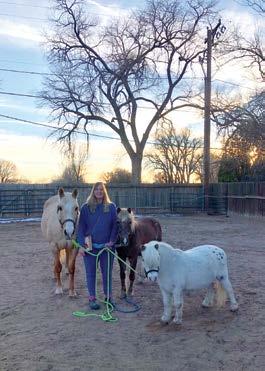
SOCIAL RESPONSIBILITY: All proceeds go to the cats we rescue. Cat owners generally choose us to contribute to these lives. We also periodically send an e-magazine to cat


Besides always going the extra mile with care, I am very close to most of my clients like family. I am always receiving compliments on my pet photography and have had many clients tell me I should be a pet photographer. I am like the pet paparazzi. —Katie McKeown, FOR THE LOVE OF ANIMALS LLC, Corrales, NM

ADOPTION: We provide temporary home support for the cats we rescued from the streets and are looking for permanent homes. Sometimes the cat owners we support can adopt one of these children. Sometimes we adopt cats to people who have never had a cat, and then we gain a new job. We are the ones doing the
EXPERIENCE: We have been around cats for over 40 years. This situation gave us very good psychological analysis skills. Since we have done a lot of cat rescue work over the years, we have extensive experience and knowledge about cat diseases and their treatments.
TRUST: Turkish people generally have a big trust problem. People who have lived abroad, traveled abroad and adopted ATATÜRK’s principles are much more comfortable when it comes to trust. Providing this service was not easy in a society concerned with trust. However, we were so successful that each and every reference started recommending us to their friends. That’s why we don’t have any free time. —Esra Güroy, Pet Sitter İstanbul, Istanbul, Turkey
Being authentic, approachable, and caring I think has been some reasons my clients choose me.
—Lorell Lopez, Cat & Dog Nanny PR, San Juan, PR

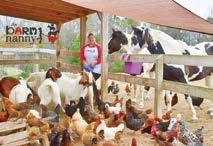
My business is focused solely on exotic pets (and a few domestic cats mixed in here and there). My superpower is being a Registered Veterinary Technician for the last 30 years, working specifically with exotic pets, zoo animals and wildlife, so my clients have peace of mind knowing that I can competently care for their uncommon pet. From working in vet med, I’m also super detail oriented which my clients appreciate.

I’m a farm sitter and I talk to all my farm animals—and they are amazing models for pictures.
—Mandy BradshawTate, The Barn Nanny, Eads, TN
I notice every detail and hire and train my staff to do the same. This encompasses so many aspects of the business, from listening to cat body language to cleaning up the off-putting smell the garbage disposal is giving off. Cats love me because I respect their signals and give them a routine they can count on. I’m often the first person to ever teach a cat how to play, which surprises their owners and encourages them to try enrichment activities as well. I also have developed a signature service guarantee that comes from the H.E.A.R.T. (Health, Experience, Adoration, Routine, and Trust). It’s a standard of care that delves into the specific qualities of service our clients can rely on.
—Shannon Hendon, Ocala Pet Sitting LLC, Ocala, FL


Mine’s easy... ORGANIZATION! This covers all my dayto-day operations, scheduling, answering client emails, etc. I use Asana for my daily/weekly/monthly/yearly checklists and Google’s CRM for new clients, so nothing is forgotten!
—Stephanie Savy, Steph’s Pet Sitting, Media, PA
I asked my husband, and he said my superpower is outstanding leadership. I have about 20 staff and I strive to be the best boss I can. I support my staff both with work and their personal lives. I consider myself to be their work “mom.”

—Michelle Mtchona, RVT, Fur and Feather Pet Care, Oakland, CA

—Zara Willmott, Cat Sitter Toronto, Inc., Scarborough, Ontario, Canada
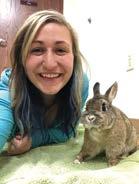
Expert bunny care! I was an Educator for the House Rabbit Society and I’ve bonded around 200 rabbits.
—Justina Allen-Yancey, Justina’s Pet Sitting Service, LLC, Prior Lake, MN




Each month you receive your Monthly Member Toolkit, which includes:
• A featured member resource— often a pet-sitter form template, client handout or webinar
• Trending articles to share in your client newsletter and/or on social media
• A featured article or blog post focused on the month’s toolkit theme
• Social-media images and sample captions your business can post online Resources are emailed to you each Monday at the email address associated with your membership.

If you are not receiving PSI’s weekly emails, please contact PSI Member Services at info@petsit.com.
When asked this question we often hear pet sitters say, “I suck it up and complete my visits anyway—there are no sick days for pet sitters.” While you may be able to complete visits with a migraine, sinus issues or even a pulled muscle, what happens when something unexpected—a seizure, a heart attack or an automobile accident—occurs?
Creating an emergency backup plan:

Have a predetermined, designated backup. If you have staff, this may be your office manager or a staff sitter. If you are a solo sitter, this may be a spouse, partner, relative or friend. It’s important that your backup is able to quickly assume your daily responsibilities. Make sure your pet-sitter insurance will cover your backup. In addition to covering visits, your backup will need to know how to access your daily schedule and client contact information in the event that you are incapacitated. Make sure you have a detailed plan: Will the backup take over your visits indefinitely, or will they handle your visits for that day only and then contact clients and/or their emergency contacts to assume care of the pets?
Make sure your clients know your emergency plan. Notify clients of your plan and what their obligations are in the event of an emergency. If you have a backup sitter, explain that, while unlikely, if an emergency occurs another individual will have access to their homes and care for their pets. Or, if your plan includes having their emergency contacts step in, make sure clients know they are responsible for providing up-to-date emergency contact information.
The reality is anything can happen and having an emergency backup plan is a must for professional pet sitters. Your clients—and their pets—are depending on you!
Beth Stultz-Hairston, PSI 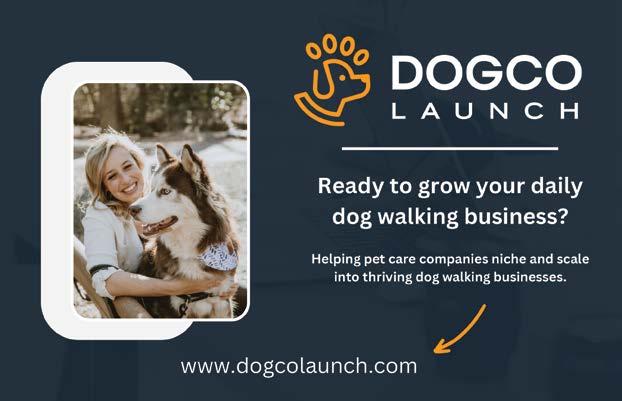

In its Pet Industry Sustainability Trends report, NielsenIQ shares that 92 percent of consumers say that sustainability is important today (and 69 percent indicated that sustainability is more important than it was two years ago). The Pet Sustainability Coalition (PSC) reports that 80 percent of young U.S. adults (ages 18-34)—the fastest growing demographic of pet parents—are willing to pay more for sustainable products.
So, how can you have a more sustainable, eco-friendly pet-sitting or dog-walking business?
First, let’s look at a couple of definitions: “Sustainability” refers to the “quality of not being harmful to the environment or depleting natural resources” (Dictionary.com). Similarly, “eco-friendly” is defined as “not environmentally harmful” (Merriam-Webster).
As you build and grow your pet-care business, what are some policies and procedures you can implement to reduce your harm to the environment?
One of the first steps you can take is to go paperless. It seems that every company—from banks to insurance providers—now offers this option. But if you haven’t jumped on the paperless bandwagon yet, there are some easy changes you can implement. If you provide clients with invoices, begin sending those by email instead. If you (and your team, if applicable) leave daily notes behind for clients, consider sending updates by text instead—or, if you use pet-sitter software, communicate updates to your clients through that system. If you use a pet-sitter presentation book or provide new client welcome packets, those materials can easily be digitized to provide in a PDF format as well. If you like to leave informational articles behind at clients’ homes, consider sending a monthly e-newsletter instead. Going paperless doesn’t just help the environment, you’ll
also be saving money that you previously had to spend on paper and ink!
Another way to operate a more sustainable pet-care business is to seek out environmentally friendly options for the products you regularly use in your business, such as poop bags.
There’s quite a bit of confusion around biodegradable poop bags, as simply using the term “biodegradable” doesn’t indicate that the bag will biodegrade within a specific time frame. When researching biodegradable poop bags to use, look for companies that provide a time frame for how long decomposition will take. You may also look for non-plastic bags or bags made from recycled materials.
It’s also worth checking to see if there is a composting facility near you that accepts pet waste. If so, transporting your poop bags to a municipal composting facility is an excellent option. Composting facilities that accept pet waste appear to be more common in Canada than in the U.S., but it’s a good idea to check wherever you are located to see if this may be an option.
When using or recommending other types of pet products to your clients, look for products that are cruelty free (not tested on animals) and ones that are made from sustainable materials—as well as locally sourced materials— when possible.
In addition to the ideas shared above, there are a variety of other ways you can reduce the carbon footprint of your company (and yourself). Do an energy audit of your home office (and home in general) and implement energy-efficient measures, including changing to LED light bulbs and switching off lights and unplugging your electronic devices when you aren’t using them. If you are shopping for a new vehicle, you may consider purchasing an electric or hybrid vehicle. And, you can cut down on your driving time by sticking to a reasonable service area and planning your pet-sitting visits to take the most efficient route.
Looking for more ideas to make your business more sustainable? Your employees (if you use staff) can be a great resource! Ask them about their eco-friendly practices and other pet-related sustainable businesses they support. You can also seek out recommendations from fellow pet-care professionals in your local pet-sitter network or in PSI’s private Facebook group, Professional Pet Sitters Chat —PSI Staff
• A cat was given too much insulin by the pet sitter and required medical attention.
• A pet sitter accidentally shut the client’s door on their dog’s tail by mistake.
• A dog in the pet sitter’s care received several lacerations while playing too rough with other dogs. Due to complications from the injuries, the dog passed away.
• While walking a client’s dog, the pet sitter accidentally dropped the leash. The dog ran off and was never found.
• A dog was playing on dunes and fell off the back side. The dog began dragging both legs and was unable to walk.
• A pet sitter shut a dog in the bathroom by mistake. The dog scratched and chewed up the doorframe and part of the wall.
• A dog suffered a cut while being groomed by the pet sitter. Total Paid $1,640.
• The pet sitter did not properly secure the client’s dog, which resulted in the dog ingesting the client’s medication. The dog required an overnight stay at the vet. Total Paid $3,946.
• The dog’s crate was not shut correctly, and the dog was able to escape. The dog chewed up the carpet throughout the master bedroom.
• A pet sitter’s car was broken into and their bag with client keys and contracts was stolen. As a result, the locks on clients’ homes had to be rekeyed. Paid $1,498.
• A dog ran into an employee’s leg while playing, causing the employee to fall and injure their knee.
Total Paid $1,065.
• An employee attempted to separate two dogs that were fighting and was bitten on their hand, requiring stitches.
• While reaching for a dog’s collar, an employee was bitten several times by the client’s dog. $6,538.



to see if he had any interest in partnering to offer coverage to pet sitters. But initially they struggled to find an insurance company willing to offer any type of policy for pet sitters at any price, much less adequate coverage we know now. However, in June of that year, Jim was able to convince a company that his wife’s firm represented to take a risk on a group of pet sitters that were professional and dedicated business owners with an advanced knowledge in
In order to offer the coverage at an affordable rate (that would not break the average pet sitter’s bank), they had to be creative in their approach. In lieu of individual policies, they presented insurers with the idea of one policy that would cover all the association members and offered to handle all the applications and processing within the agency, as opposed to having the insurance company process. The insurer at the time had some experience with similar association programs done this way, and hence the first master policy in the name of a pet sitter association was born! By providing a policy in the name of the association, all active members were now able to purchase/secure coverage for their individual busi-
Unfortunately, Jim left the agency in 1995 to pursue other interests. At the time, the agency was struggling holding the program together, and into the early 2000’s, there were a number of problems with a variety of program insurers, and many underwriters were concerned about the lack of actuarial experience that existed for pet sitters. Most felt the pet sitter premiums were just too small for the perceived exposure, while others went out of business as they took on too many risky new programs with non-professional groups or associations. BIC was continually forced to seek out new insurers for the pet-sitting program. Fortunately, we were continually able to find solid financial companies in which to do so.
The value of association membership
What set BIC’s pet-sitting program apart from others was the fact that the agency worked with professional members of professional associations that were willing to pay to be a part of a professional organization dedicated to education, and demonstrating to their pet parent clientele they were not a fly by night operation. By this time coverage was being offered through both Pet Sitters International and the National Association of Professional Pet Sitters. The pool of insurers approached all agreed that the members of PSI were true professionals that took pride in their industry and were willing to join the leading trade association. They viewed PSI and NAPPS members much the same way as members of other successful associations such as National Home Builders, who brought professional members together to educate and improve for the betterment of their profession. This validated to insurers that members were serious about their profession (as well as their individual businesses) and did not take coverage for granted.
Furthermore, insurers were impressed with the fact that our association partners were continuously working to further educate their members, especially on the types of losses other insured members were incurring. BIC, working with PSI and their membership, sought out ways to both enhance coverage, and reduce losses in the individual member businesses. This strategy continues to be valued today by our current A rated insurance company, Century Surety, which is a member of The Accident Fund Group of Companies. Over the years, in lieu of begging insurance companies to write the liability coverage for the members, many other companies have approached the agency, while many other competitors have entered the market to offer coverage to the individual pet sitting and dog walking companies.
Even though BIC incurred many claims (e.g., dog bites, water damage, pet injuries, etc.) in the first few years, the agency was always fortunate enough to locate insurers willing to offer coverage via an association master policy plan, which still exists today. And although the product
plans we offer today are much improved over the agency’s first offering back in 1992, our underwriters continue to value the approach of working with active professional members of associations such as PSI. The approach allows us the flexibility to continually improve and enhance the broadest insurance products available to professional pet sitters.
As mentioned earlier, today there are many insurance options available for pet sitters and dog walkers, but when you compare the PSI liability coverage to those of other providers, you will find that there is no other company that covers claims and treats its insureds better.
This is all due to the pool of professionals found at PSI!
Today, as we have come out of COVID, with pet sitting and dog walking again on the rise as a profession, it is even more important that professional sitters take advantage of the educational opportunities afforded by PSI and other associations, to separate themselves (true professionals) from the many tech company hobbyist sitters and walkers, as well as those who just want to make a quick buck. With more hobbyists come more insurance claims, less professionalism, less pride and respect for the industry, more negative publicity, and ultimately, higher insurance rates for the industry to come. Therefore, I urge you all to educate yourselves and your teams—and take advantage of the intellectual capital offered by PSI!
In addition, if you’re reading this and aren’t doing so already, I urge you to take the time to read the insurance claims on page 34 and share them with your teams, so they are aware of what can go wrong if you’re not diligent in your approach. A very large number of claims we see today are still due to lack of education and training of team members. And many claims can be avoided by simply implementing and following a few professional guidelines in your business, such as not allowing others to pet the dogs you are walking (no matter how sweet they may seem to be), or making sure you know where the cat in your care is when you leave a client’s home, and/or how to properly administer medications (if you need to do so).
Over my career, I have attended hundreds of professional pet-care conferences and educational seminars for many associations, and often I see many of the same faces each year looking to learn and gain more knowledge in their respective industry. Most are some of the most successful professionals in the industry! I don’t believe their success is by accident. That’s why BIC still chooses to work with and sponsor PSI—to support the members dedicated to education, professional development, and success!

Driving along the bluffs of Palos Verdes, I was admiring houses wishing I could one day own, when I saw a dog hanging from a balcony! I ran to the house frantically banging on the door, then ran with the owner through the house. We pulled the dog up over the railing with as much caution as we could, and I checked vitals like I learned in your pet first aid class two nights before. The dog was not breathing and did not have a pulse. Thanks to your class, I knew what to do and began CPR. – Kim Kohler, Ohana Pet Sitting
Kim was in a situation none of us want to be in, but she was equipped to handle it. The dog spent a few days in Intensive Care but then recovered nicely at home. As you can imagine, Kim’s words confirm I am doing what I was meant to do when training pet parents and pet sitting professionals in animal life-saving skills.
What is Cardio-Pulmonary Cerebral Resuscitation?
CPR, or CPCR, is the way to save a pet’s life when their heart stops beating or is beating ineffectively to circulate oxygenated blood to the brain and other vital organs. It is a manual means of pumping blood and oxygen when the animal’s heart cannot. In the human world, cardiac arrest (CA) starts off with the responder calling 9-1-1, sending someone for an AED (Automated External Defibrillator) if available, and giving chest compressions until help arrives. In the pet world, the responder not only performs the manual compressions but often provides transport to veterinary care. As first responders, we do not use AEDs on cats or dogs as most typically do not experience arrest rhythms that are helped by these devices. It’s best to perform manual CPR and get quickly to veterinary care.
Keep in mind that by performing CPR, you HAVE NOT…
1. Administered an antidote for poison the pet may have ingested.
2. Stopped internal bleeding.
3. Cured heart disease.
Therefore, immediate transport to a veterinary hospital is imperative. However, by performing CPR, you may restore the partial flow of oxygenated blood to the dog or cat’s brain, heart, other organs and tissues. Your role is to delay tissue death and extend the chance for survival without permanent brain damage until you can reach medical help. After stabilizing the four-legged patient, hopefully the veterinarian can administer the antidote, control internal bleeding or prevent progression of disease. Without YOU delivering a pet with viable tissues and organs, the most competent veterinarian cannot save the animal.
Why Should You Learn & Perform CPR?
Emergencies happen when you least expect them.
Like most, Kim wanted to be prepared to handle an emergency, but never thought she’d actually have to come to the rescue, or at least she hoped she would not have to, but life happens, and within a few days of learning, she had to put her skills to the test. When you care for dogs and cats, think of them as furry toddlers who can get into trouble without warning.
Seconds count.
Transporting a pet to an animal ER without performing CPR decreases that pet’s chance of survival. Should that pet survive cardiac arrest without intervention prior to reaching veterinary care, they could suffer permanent brain damage. Within 3-5 minutes of not receiving sufficient blood and oxygen, brain cells begin to die, so a resuscitated pet with brain damage may not be the same pet you knew. They may lose use of limbs or ability to hold their bladder, or suffer blindness, seizures and memory loss for instance, including the inability to recognize their owner or caregiver. By performing cardio-pulmonary cerebral resuscitation, you increase the dog or cat’s ability to return to a fulfilling life. With the implementation of the RECOVER (Reassessment Campaign on Veterinary Resuscitation) guidelines for Pet CPR in 2012, studies have proved the shorter the period of time from arrest to initiation of CPR, the better the chance of survival.
The simplest answer to determine when to begin CPR is:
● If a dog or cat is not breathing, immediately begin rescue breathing (i.e., mouthto-snout resuscitation).
● If you also cannot feel a pulse, begin chest compressions, and quickly get to veterinary care!
When a dog, cat or human suffer cardiac arrest, the survival rate is low, but providing CPR can make a difference. For humans, decades of data evaluating human outcomes exist, but in the veterinary world, most data comes from university and specialty hospitals that care for the sickest animal patients with underlying conditions. Still, approximately 45% of humans and 35-55% of dogs and cats do achieve return of spontaneous circulation (ROSC) after being given CPR. These pet statistics are according to a study published in the Journal of the American Veterinary Medical Association. Sadly, many later die under veterinary care due to the severity of illness or injury, or are euthanized due to poor prognosis or lack of financial ability to pursue treatment. Yet, 6 - 9% of dogs and cats survive to discharge when provided CPR, so if a dog or cat that holds your heart is that 6 to 9 out of 100, that is an amazing thing and shows CPR can really save a dog or cat’s life!
The basic steps to properly perform CPR on a dog or cat include:
1. Safely approach the pet and place your hand on their chest to feel for breathing.
2. No chest rise? Pull back on chin stretching out airway but keeping the pet’s face against the ground.


3. If still not breathing, gently extend tongue past canine teeth (to move any obstruction forward) and provide two slow full breaths directly into the nostrils. Your mouth must make a tight seal around the pet’s nose and your hands must completely close the pet’s mouth so that air does not escape.

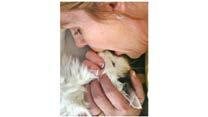
4. Once you have delivered two breaths, noted by a slight rise of the chest, check for a pulse at the femoral artery (depression in hind leg near groin). If a pulse exists, continue rescue breaths, re-checking pulse every 30 seconds (approximately 10 breaths provided to the animal). If there is not a pulse…


5. Determine proper location* and hand position** and begin chest compressions at a rate of 100 - 120 compressions per minute allowing for full elastic recoil (i.e., the refilling of heart chambers with blood). Think of a pet’s squeaker toy. Once squeaked, it needs to refill with air before it can squeak again. With the heart, you compress to send blood out of the heart and through the body, but the heart chambers need to refill before you can squeeze again.

*Compression locations:
● Keel-chested dogs, small dogs and cats—Landmark by bending the front elbow back slightly until it touches the animal’s chest.
● Round or square-chested dogs, obese small dogs or cats—Find the dome, the highest and widest part of the chest.

6. Continue compressions until the animal is resuscitated, OR until you get the pet into a car to transport. If someone else is driving, continue CPR until you reach animal ER.

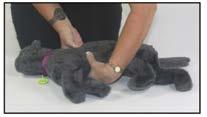
NOTE: Pet must be on a firm surface when performing chest compressions. If you transport the animal in the backseat of a vehicle, quickly find a board or sturdy object to place underneath the pet to avoid pushing the pet into the cushion rather than squeezing blood out of their heart.

● Barrel-chested dogs (or any dog whose ribs are too strong to compress)—Place the dog on his back and compress between front legs, directly on the sternum/breastbone.
**Hand positions for compressions:
● Medium and larger dogs—Place heel of one hand in appropriate location with dominant hand on top, lock elbows and compress with body weight over pet.
● Small dogs and cats—Either use two fingers instead of your hand to compress at appropriate location, or sandwich your hand around the pet’s chest with your thumb on one side and three fingers on the other to compress.
Watch a video here:
Dogs - https://www.youtube.com/ watch?v=O0ou0BJiuqA
Cats - https://www.youtube.com/ watch?v=_Jk4tSCPVDA
In Conclusion
Achieving competence in performing Pet CPR not only instills the confidence you need to react to an unexpected situation but also increases the chances of survival for your fourlegged patient.
Denise Fleck is the Pet Safety Crusader™, having taught 31,000 humans animal life-saving skills. Her mission is to help YOU make a difference in the life of an animal through her pet first-aid, senior pet care and disaster preparedness classes. Denise has appeared on television, radio and in magazines, and has authored more than a dozen books. She is the proud recipient of multiple awards from both the Cat and the Dog Writers Associations, including the PSI Professional Pet Care Award Learn more at www.PetSafetyCrusader.com
FEBRUARY 21
Building

APRIL 17
Authenticity: How to


www.psi-ins.com
JUNE 19
Presented by Amy Toman, Pet Sitter SEO

Engage your

To register for upcoming webinars, visit petsit.com/psi-webinars
Presented by Mary Tan Whisker
Media

Webinars are free to members, but pre-registration is required. All member webinars are recorded for on-demand viewing, and the on-demand recordings of PSI’s webinars include closed-captioning and/or transcripts.
Certified members can earn up to 2 CEUs per webinar (whether you watch live or view the recordings).
If I landed on your website right now, before I scroll, would I know where you’re located? Will I have clicked to your website because you came up in my “near me” search? And further, did I start my journey by seeing your Google listing in my search?
All of those results should happen, right? Potential clients should find you because you’re in their area, right? Of course. Google and the search engines should know where you are. But then…how do they know? How do they know you’re the Pampered Pets of your city and your state, and not the Pampered Pets of another city and state?
The search engines—I’ll default to “Google” going forward—get your location from many sources, including your website, your Google listing, local directories and social accounts. But how can you make sure that YOUR business is the one that comes up in local searches? That your Pampered Pets is the one that appears to everyone in your town / city / county? That’s where local optimization comes in.
Adding location modifiers to your website to gain visibility is known as “local optimization.” This strategy increases your visibility to users and search engines, so they have no question where your business is located. This strategy can be used on websites and, to a lesser degree, Google listings. I’ll concentrate here on websites.
Because most pet-care businesses serve local customers, business
owners need to make every effort to publicize their location and their service areas. Google listings are, by their nature, local, because they promote based on the address used to register (whether the address shows or not). But when users land on your website, they need to be told if you’re in their local area, especially if they need you to come to their location. So, if you’re not local to them, or they can’t figure out where you are, they may click away from your website because they have no reason to work with you.
These days, Google learns about businesses from context, not random placement. Remember when you could add a word or ZIP code 20 times on a page and be found for that? That strategy is no longer effective and hasn’t been for many years. Google’s evolved and now learns primarily from context. If you say you’re located in a certain city, you need to not only say that, but prove it.
The most important place to add local info is on the top of your pages, preferably in the largest piece of text, at the top. This is usually the topic line of each page, similar to this on a home page:

This header, from the home page of Top Dog Pet Sitters’ site (https:// topdogpetsitters.com/), indicates very clearly where the business is, and what services they provide. This has been formatted as the H1 for the page as well, which tells Google it’s the most important text on the page.
This header from Little Friends Pet Sitting site (https://littlefriendspetsitting.com/) does the same thing, but in more specific terms for the services.
Both of these provide the same information: location of the business and the services they offer. The wording may change, but the concept remains the same: feature your location and services at the top of your home page, and be sure to format it as an H1, so Google knows it’s the most important content.
This strategy may be applied to all pages, and the ones I prioritize are Home, Services, Service Area, and any subpages (like Dog Walking, Pet Sitting, or Location pages):
Featuring your location and services at the top of a page gives users the information they need to make an immediate assessment of whether your business will be able to provide the services they need.
But this information should also be seen in the footer of your website. This is another great place because even if the page is about a general topic, your service areas are still visible.


dogwoodcrittercare.com/), presents locations in a spot where Google and users can easily view them on every page of the site.
Other great spots to add your location
Title tags are the next place to prioritize when updating your website. These are the bits of text that appear on browser tabs and on the top line of search results for a page.
Home - Top x +
topdogpetsitters.com
By adding your location here, users who see it in the organic results may make an even quicker decision to contact you, because they now know you operate in their location.
One other good place to add your location is in meta descriptions. The meta description is the text that appears in search results, and adding location there may also help, but in a limited way: Google may not show the text you enter if they feel it won’t help you in search results. But it’s worth adding, nonetheless.
Trusted Pet Sitting and Dog Walking in Charlotte, NC. affection & attention your pet loves while you're away.
Note, though, that Google has said that they don’t use meta descriptions as ranking signals, so between that and the low percentage of times they present your meta exactly as written, I’d consider these but not spend too much time optimizing them.
Still more great places to optimize for local Another element of local optimization is creating individual pages for the different locations you service.

By featuring location pages that discuss a single area, whether it’s a city, town, neighborhood, or development, you’re teach ing Google and users the areas you’ll service. This is especially helpful for the areas a bit further out from your address. This also enhances the possibility that these pages will come up on their own in search results for “[service] near [location].”
These pages should be optimized as mentioned above, with the location in the header, title tag, and meta descriptions, but also the page content. Where exactly in that town do you go? What do you like about it? What pet resources are there? Name these, and provide links and photos. Doing this shows users and Google that you’re a local and an expert (and a local expert).
Another two places to optimize Blog articles are another good place to lay out your knowledge of specific areas. Is there an annual event that caters to pets, like perhaps a fundraiser? Write about it, mentioning the location frequently. Are there pet-friendly parks, or dog runs, or trails where you’d recommend, or where you take dogs on hikes? Write about them and add links. In general, write about local places that are of interest to pet owners, and make sure to include the name of the place, the address, and links to website mentions about them.
And I know I said I was concentrating on websites, but Google listings are another good place to write about locations in your area. Write four sentences about dog walking in a local park. Or three sentences about a local 24-hour vet hospital. Or hiking with dogs on local trails. All of this enhances Google’s and users’ knowledge of your business.

Amy Toman is a professional SEO and Platinum Google Product Expert. She has been working with pet sitters since 2015 and started her own digital marketing agency in 2017. She maintains an active Facebook presence and welcomes questions from business owners of all levels of technical expertise. Learn more about Amy’s services at petsitterseo.com
Local optimization is essential to small local businesses.
Pet sitters, by their very nature of providing services at their clients’ locations, are local businesses, and they must optimize to receive any love from Google. If the search engines and users can’t quickly see where you’re located or have to spend too much time to figure it out, they won’t. They won’t do the research because there are too many others in most areas who will provide this information. So adding your info in the best places, where users and search engines can find it, will benefit you now and going forward.




Below is a list of pet-related observances you can highlight on your company’ social media pages this quarter. Plus, you can view the yearlong list on the PSI website at petsit.com/2024-pet-holidays
Pet First Aid Awareness Month
Prevention of Cruelty to Animals Month
Prevention of Lyme Disease in Dogs Month
National Heartworm Awareness Month
National Frog Month
Canine Fitness Month
• April Pooper Scooper Week
• April 2: National Ferret Day

• April 19: National Cat Lady Day
• April 4: World Rat Day; World Stray Animals Day
• April 6: National Siamese Cat Day
• April 7-13: National Dog Bite Prevention Week
• April 8: National Dog Fight Awareness Day
• April 10: National Siblings Day; National Hug Your Dog Day
• April 11: National Pet Day; Dog Therapy Appreciation Day
• April 14-20: Animal Care and Control Appreciation Week
• April 15: Tax Day
• April 17-23: National Pet ID Week
• April 18: Get to Know Your Customers Day; Pet Owners Day
• April 21: Bulldogs Are Beautiful Day
• April 23: National Lost Dog Awareness Day; National Scoop the Poop Week
• April 26: National Kids and Pets Day; Hairball Awareness Day
• April 27: World Veterinary Day; National Little Pampered Dog Day
• April 28: National Pet Parents Day
• April 28-May 4: National Small Business Week
• April 30: National Adopt a Shelter Pet Day; National Therapy Animal Day; National Tabby Day
PSI’s Pet Sitter Safety
National Pet Month
Chip Your Pet Month
Responsible Animal National Purebred National Specially-Abled Pets Day National Bird Day Mayday for Mutts; Cinco de Meow Day
• May 5-11: National Pet Week®; Be Kind to Animals Week®
• May 11: National Animal Disaster Preparedness Day; National Dog Mom Day
• May 14: International Chihuahua Appreciation Day
• May 20: National Rescue Dog Day
• May 21: World Dog Day
• May 23: World Turtle Day
June 2024
National Pet Preparedness Month
American Humane’s Adopt-ACat Month®
Adopt a Shelter Cat Month
National Foster a Pet Month
National Microchipping Month

• June 2-8: Pet Appreciation Week
• June 4: Hug Your Cat Day; International Corgi Day
• June 8: National Best Friends Day
• June 11: World Pet Memorial Day
• June 15: National Dog Dad’s Day
• June 17-21: PSI’s Take Your Pet To Work Week®
• June 17: PSI’s Take Your Cat To Work Day®

June 21: PSI’s Take Your Dog To Work Day®
June 24: Cat World Domination Day
Don’t forget that PSI also includes free social-media images for members to download and use in each Monthly Member Toolkit

ings—and to also be familiar with any areas you will be walking clients’ dogs.
• If you are taking on a client in a neighborhood unfamiliar to you, visit the area and familiarize yourself with the route you will be walking the dog in advance. If any areas of the potential route are secluded or poorly lit, plan an alternate route.
• Always be focused on the dog and your surroundings when walking a client’s dog (or your own). While you may pull your cellphone out to take a quick picture of the dog for your client (even then be sure you are in a safe spot to do so), it should be put away otherwise. Talking on your phone or having your earbuds in to listen to music or a podcast may prevent you from noticing a person, other pet or vehicle approaching you.
• You may also check recent crime records in your service area to learn of any dog thefts or other crimes you should be aware of and consider seeking out a situational awareness or self-defense training (online and local inperson options are often available) to help you feel better prepared to handle potentially dangerous situations.
You often enter clients’ empty homes during early morning or evening hours, so it’s important to be cautious when you arrive for pet-sitting visits (any time of the day).
• If an unexpected vehicle or person is in a client’s driveway when you arrive for your visit, do not stop and get out. Call your client to see if they expected anyone at their home. If they did not (or you can’t reach the client), contact local law enforcement (and do not go back to the home until they have arrived and determined it is safe for you to enter).
• Be sure to look for any open or broken doors or window when you arrive. While your first thought will likely be to run inside and check on the pets if you see damage to the home, you should leave the premises, notify the client, and alert local law enforcement (and again, not return to the home until it has been determined it’s safe to do so).
• Also remember to lock the doors of your vehicle once you exit it, and then also lock the doors of the client’s home behind you once you enter for the visit. While you are on the visit (or dog walk), always keep your keys and phone with you. This ensures you have quick access to both in the event of an emergency and also prevents you from accidentally locking yourself out of the client’s home!
While it’s important to keep the above tips in mind, preparation for a safe pet-sitting or dog-walking visit should actually begin prior to accepting an assignment.
If you are contacted by a prospective client in an area you are not familiar with (although it’s in your service area), you can always do an online search to ensure that the address is valid and is a residential home (and not a vacant home on the market). Also be sure that someone knows where you will be and what time you should arrive/ leave when you visit a prospective client’s home.
Do a walkthrough of the home at the initial consultation (“meet and greet”). This allows you to become familiar with the home and where pet supplies are kept, but it also
gives you the opportunity to notice any potential dangers you should alert the potential client to, such as broken locks, holes in fences, etc. These dangers should be addressed and fixed prior to your visit.
Also be sure to ask about any others who will have access to the home in the client’s absence and note this in your service agreement. Many pet sitters choose not to accept assignments when family members, friends or service providers may have access to the home. (If you do not accept clients in these situations, be sure to have a written company policy in place that you make clients aware of.)
Other pet sitters have shared that they have many clients with other service providers (e.g., housekeeper, groundskeeper, etc.) who have access to the home, but ask that clients provide information on each of the providers, including a vehicle description and when they will be in the home.
If you accept the pet-sitting request and the first visit will be at night, ask the client to leave inside and outside lights on so you will not be entering a dark home. For multi-day assignments, you can alternate lights in the home and turn the outside light on as needed so that you do not have to enter a dark home on subsequent days of the assignment.
In the Members Area of petsit.com, you can download a free “Preparing for Your Pet Sitter” handout to share this tip and others with your pet-sitting clients.
Most importantly, remember to always follow your gut instinct. If you feel uneasy during the initial phone call or at the meet and greet (or if you simply feel the job just isn’t a good fit), you do not have to accept the job!


When I start working with a new company, one of my first questions is “what sets your company apart from your local competitors?” In this article, I’ll be breaking down why this is a critical question for your company and why you need a strong differentiator in your company compared to your competition.
Differentiators are something you include in your business to answer the question for the client “why should I use you?” Most pet care companies offer a broad range of the same services: in-home pet sitting, overnight sitting, dog walking, pet taxi, etc. This is not a bad thing, as it is the backbone of our industry and meets a core client need: trusted pet care for their pets.
However, in a market where we are not only competing against other professional companies but hobbyists, there has to be a reason that your company is the one to use. We have to identify and give a clear reason of value that a potential client would consider your company and then say “yes… they are the one for me.”
Most companies try to get clients to use them based off of company values: “we care the most” or “we are the most trustworthy.” Unfortunately, This is not the most effective way to differentiate, because it’s difficult to quantify for the client and build evidence for (which also requires work on their end).
So where do we go from here? I’d like to make the case that you can differentiate on the value of the problems you solve for clients. Meaning, companies can differentiate themselves based off of who understands and can articulate solutions to the client most effectively.
This benefits your sales strategy for several reasons:
1. It reduces the cognitive load for the client. The client is no longer having to do work to sort through the individual companies and research. Instead, they are able to choose the company that connects with them the most. This is one reason differentiation is so effective—the client doesn’t have to think, they can just be understood.
2. Companies that communicate to the client solution/problem oftentimes are building solutions to actually meet the client need, rather than meeting their needs as a company. This aligns them closer to the needs of the client.
Let’s work through an example:
Say your target avatar is a work from home young professional with a young and energetic dog. What is this target client’s probable pain point that would bring them to use your company?
Most likely, it’s some combination of the following:
• The dog being disruptive while they are on calls
• The client feeling guilty for not being able to play with the dog while at home
• The client worrying they will get in trouble at work for the dog barking excessively while on Zoom calls
• The dog generally creating difficulty in the client being able to focus on work and important meetings
• The dog acting out and becoming destructive because they feel ignored
… you get the idea! So, one way we can create a differentiator for our company from the example above is to position ourselves as the “best work from home tool you can invest in,” and then possibly offer an enrichment upgrade for their dogs if they book our services 3 times per week. The enrichment upgrade could include a weekly puzzle or game you send the client to help keep their dog distracted while they work. The beauty of this is it could be as simple as a weekly email with ideas for things they could do at home—which means no extra cost to you!

Michelle Kline the founder of DogCo Launch, where she helps other companies grow and scale their pet care businesses. Until the recent sale, Michelle was the owner of Venture Dog Walking, a daily dog walking company in Winston-Salem, NC, that Michelle tripled in size after transitioning from full-service pet care to daily dog walking during the pandemic.






According to findings from a report called “Pet Diabetes Care Global Market Report 2023,” the global pet diabetes care market was likely to hit $2.03 billion last year, up from $1.86 billion in 2022—and is projected to reach $2.78 billion by 2027.
Considering these statistics, it’s likely that you’ll be asked to care for a diabetic pet—or care for a pet that you suspect may have diabetes.
While you cannot (and should not) attempt to diagnose pets as a professional pet sitter, you can (and should) notify pet parents of any warning signs you notice and encourage them to seek veterinary care. As an advocate for the pets in your care, it’s a good idea to familiarize yourself with the warning
signs of diabetes in pets so that you can be on alert and notice possible signs.
According to the American Veterinary Medical Association (AVMA), early signs of diabetes are important to note and may include:
• Excessive water drinking/ increased urination
• Weight loss (even without a decreased appetite)
• Decreased appetite
• Cloudy eyes (most common in dogs)
• Chronic infections, such as skin or urinary infections
The Canadian Animal Health Institute also notes that “walking or standing in a plantigrade posture (‘down in the hocks’)” is another clinical sign seen in diabetic cats.
If you observe these signs in clients’ pets, be sure to mention these (or any other changes you observe) in the pet-sitting daily notes/updates you send.
According to data shared on the Pet Diabetes Month website at petdiabetesmonth.com, diabetes affects anywhere between 1 in 100 to 1 in 500 dogs and cats, and experts believe the disease is on the rise.
While Pet Diabetes Month is observed in November, any time is a good time to educate yourself—and your clients—about this important topic. The Pet Diabetes Month website offers educational articles, a risk quiz and content you can share. —PSI Staff
PSI’s motto is “pet-sitting excellence through education,” and we understand that education also plays a pivotal role in the promotion of more diversity and inclusion in our industry and in members’ individual businesses.
PSI is pleased to assist in providing resources that can help professional pet sitters educate themselves on these important issues as they impact our industry and small businesses.


petsit.com/dei
The resources available to members at petsit.com/DEI explore a variety of issues related to diversity and equitable treatment in workplaces and small businesses.
On this same page you can also view PSI’s Non-Discrimination and Anti-Harassment Policies. We encourage members to adopt and actively implement similar policies in their pet-care businesses.
Depending on where you are located, it may be that time of year where temperatures begin to climb—and with those increasing temperatures come the news reports of pets (and children) that become extremely ill or pass away from being left in hot vehicles. While it seems common sense to never leave a pet unattended in the car, some pet parents may think simply running a quick errand while leaving the pet in the vehicle poses no danger. Some pet owners do not realize that even if they crack the windows or leave their automobiles running with the air conditioner on, temperatures inside vehicles can still become dangerously hot very quickly. These temperatures put pets at risk of illness, or even death.
As a professional pet sitter, you have an opportunity—and obligation—to educate local pet owners on the dangers of leaving pets in hot cars, even for just a few moments.
As a professional pet sitter, what can you do to help?
Understand the risks.
Hundreds of pets die from heat exhaustion after being left in vehicles each year. It’s important to understand and explain to your clients that temperatures inside a vehicle can rise almost 20 degrees in just 10 minutes. After an hour, the temperature inside a vehicle can register more than 40 degrees higher than the outside temperature!

The American Veterinary Medical Association (AVMA) shares a chart detailing the estimated vehicle interior air temperature vs. elapsed time at avma.org/resources-tools/pet-owners/ petcare/pets-vehicles.
Despite what many pet parents may assume, studies have also shown that cracking windows has little impact on the vehicle’s interior temperature. Remember, too, that leaving pets in vehicles is not only risky due to hot temperatures. Unattended pets are in danger of theft as well!
Know how to respond.
If you see a pet in a hot vehicle, what should you do? First, write down the make/model and license plate number for the vehicle. If there are businesses close by, such as a store, restaurant, workplace, etc., go in and inquire if management knows who the owner of the vehicle (and pet) may be and/or if they will make an announcement to notify the owner.
If the owner cannot be identified and found quickly, contact your local animal control or use the non-emergency number to contact local law enforcement. Some states have “hot car” laws and others also have “Good Samaritan” laws in regard to those finding pets in dangerous situations.
The Animal Legal Defense Fund offers a summary of variations in laws and regulations by state on its website at aldf.org/project/an-avoid-
able-tragedy-dogs-in-hot-cars/#overview-of-state-laws. As of 2020, the site indicates that 31 U.S. states, as well as the District of Columbia, had some type of “hot car” law.
If you are outside the U.S., Google the laws where you live, or check with your local humane society. For example, the Ottowa Humane Society, ottawahumane.ca, shares steps to take if you observe a pet left in a vehicle and provides details on the Provincial Animal Welfare Services (PAWS) Act.
Educate local pet owners.
As a professional pet sitter or dog walker, you are an advocate for your clients' pets and your local pet community. During the hot summer months (and throughout the year) look for easy ways to educate local pet parents about the dangers of leaving their pets in their vehicles.
Efforts to consider include:
• Sharing articles or other informational leave-behinds at clients’ homes during your visits
• Including articles on the topic in your client e-newsletters
• Sending press releases to your local media
• Sharing tips and warnings on your social-media pages or blog —PSI Staff


CINDY ABBATIELLO
7 Paws Pet Sitting Salem, SC
THERESA AVILES
Paddy Break Pet Services Pensacola, FL
GENIA BATHE
Blue Sky Pet Services Knoxville, TN
AMANDA BERNARD
The Vet Nurse Pet Nanny Owings, MD
AMANDA
BERNSTEIN
Sit & Slumber Pet Care Coplay, PA
ANDREA BISSINGER
Andrea’s Happy Pet Care LLC Cape Coral, FL
to these PSI members who have recently earned the designation of CPPS-Certified Professional Pet Sitter®:
SHANA BOATWRIGHT
You x 2 Pet Sitting Services Heiskell, TN
SHARON BOATWRIGHT
You x 2 Pet Sitting Services Heiskell, TN
MARIE BRIDGEWATER Mutts Amore! Fairbanks, AK
MELANIE CAREY Doggy Adventures Anchorage, AK
CRYSTAL CHAMBERS
Pawsatively Golden Pet Care LLC Wilmington, NC
BETSY ROSE
DURHAM i-Sit Pets Louisville, KY
CHERA ENGSTROM
Ma and Paws Critter Care New Hope, MN
SAMANTHA EVENSEN
Walk the Walk PPC Tampa, FL
JEN FASHING
Little Critters Pet Sitters LLC Sunbury, OH
GLENDA GABLE
Autumn’s Bed & Biscuit Pet Sitting Services Wesley Chapel, FL
DELENA HALFERTY
Delena’s Pawsitive Petcare Elkhart, IN
LAURA HARWIN
Pied Piper Pet Sitters, LLC Pittsburgh, PA
KASEY HAYES
Pawsitive Vibes Monroe, NC
SHANNON HENDON
Ocala Pet Sitting LLC Ocala, FL
KELLI HOLLOWAY
VIPs Very Important Pups Dog Walking & Pet Sitting McKinney, TX
CAROLYN JAMATE
Happy Paws Happy Tails LLC Staten Island, NY
ALEXANDREA
JAYNE
Always With Alex LLC Madison, OH
ANDREA JENKINS
Simply Tailz Plainfield, IL
ALLYSYN
KIPLINGER
Sugar Face DogsSenior Dog Care Oakland, CA
BRENNAN LASLEY
Brennan’s Pet Care LLC Lexington, KY
MARSHA
LAWRENCE
Cruzin’ K9s Tonawanda, NY
KRISTINA
LUCERO-WEHNER
Pet Acres Farm LLC Hoosick Falls, NY
JULIA MARTINSON
Pads and Pets LLC New London, WI
LEEANN MATSON
Peaceful Paws Pet Care LLC Austin, TX






